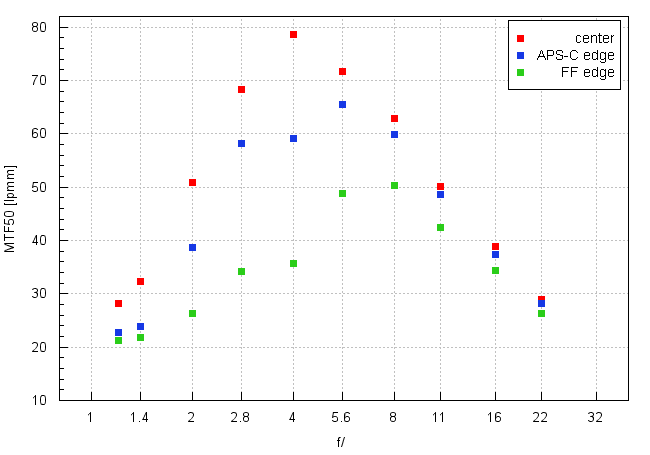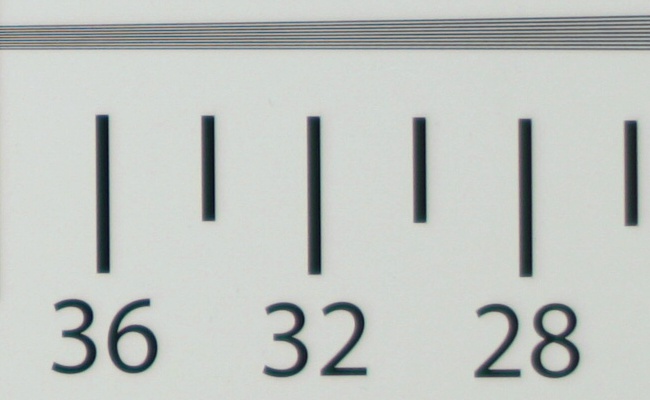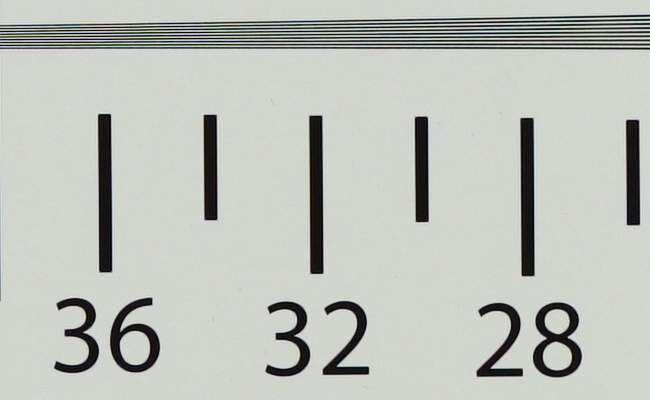Voigtlander Nokton 50 mm f/1.2 Aspherical
4. Image resolution
Let's check how the Voigtlander Nokton 50 mm f/1.2 Aspherical compares – its results in the field centre, on the edge of the APS-C sensor and on the edge of full frame presents a graph below.

Please Support UsIf you enjoy our reviews and articles, and you want us to continue our work please, support our website by donating through PayPal. The funds are going to be used for paying our editorial team, renting servers, and equipping our testing studio; only that way we will be able to continue providing you interesting content for free. |
- - - - - - - - - - - - - - - - - - - - - - - - - - - - - - - - - - - - - - - - - - - - - - - -
I haven't seen such an interesting graph for a very long time. In the frame centre, by f/1.2 and f/1.4, it would be difficult to call images useful because they are fuzzy. Near f/1.6 the situation becomes quite sensible, by f/2.0 it is already good, by f/2.8 it is excellent and by f/4.0 it can be called outstanding – so outstanding that the Nokton 1.2/50, with a result of 78.6 lpmm is our new record-breaker. Now the situation is such that two best results (and almost identical to boot) on the full frame sensor of the Sony A7RII belog to two Voigtlander lenses.
Of course grumblers might whinge that you don't buy an f/1.2 lens just to use it from f/1.6 upwards. On the other hand, you should remember the limitations imposed by physical dimensions of this device. Let's face it, the lens has virtually everything you could expect in photography. If you want exceedingly sharp photos, it's enough you stop it down a bit. If you want sharp photos with a shallow depth of field you should stick to the f/1.6-2.0 aperture range. If you are more interested in fuzzy, out-of-focus, artistic blur, smooth bokeh and such effects, f/1.2-f/1.4 apertures will give you a lot of chances to display your skills, the only thing that you will lack is sharpness.
The edge of the APS-C sensor doesn't differ dramatically from the performance in the frame centre so you can't seriously complain. Of course in the f/1.2-2.0 range blurry areas are prevalent but from f/2.0 upward the situation is really good, becoming excellent near f/5.6.
Most of reservations you can express about the edge of the full frame sensor – in that place you reach sharp images only on stopping down over f/4.0. I admit it's not a result worth a good guality, standard lens. As you can see, small physical dimensions joined with excellent aperture fastness and a very demanding detector are a deadly combination.
At the end of this chapter, traditionally, we present crops taken from photos of our resolution testing chart which were saved as JPEG files along with RAW files we used for the analysis above.
| A7R II, JPEG, f/1.2 |
 |
| A7R II, JPEG, f/4.0 |
 |






